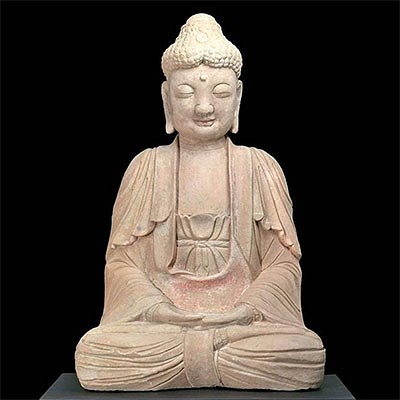10th C. Indian Chola Dynasty Stone Vishnu, ex-Sotheby's
Lot 72b
About Seller
Artemis Gallery
686 S Taylor Ave, Ste 106
Louisville, CO 80027
United States
Selling antiquities, ancient and ethnographic art online since 1993, Artemis Gallery specializes in Classical Antiquities (Egyptian, Greek, Roman, Near Eastern), Asian, Pre-Columbian, African / Tribal / Oceanographic art. Our extensive inventory includes pottery, stone, metal, wood, glass and textil...Read more
Categories
Estimate:
$40,000 - $60,000
Absentee vs Live bid
Two ways to bid:
- Leave a max absentee bid and the platform will bid on your behalf up to your maximum bid during the live auction.
- Bid live during the auction and your bids will be submitted real-time to the auctioneer.
Bid Increments
| Price | Bid Increment |
|---|---|
| $0 | $25 |
| $300 | $50 |
| $1,000 | $100 |
| $2,000 | $250 |
| $5,000 | $500 |
| $10,000 | $1,000 |
| $20,000 | $2,500 |
| $50,000 | $5,000 |
| $100,000 | $10,000 |
| $200,000 | $20,000 |
About Auction
By Artemis Gallery
Feb 18, 2021
Set Reminder
2021-02-18 10:00:00
2021-02-18 10:00:00
America/New_York
Bidsquare
Bidsquare : Exceptional Antiquities, Asian, Ethnographic
https://www.bidsquare.com/auctions/artemis-gallery/exceptional-antiquities-asian-ethnographic-6373
Museum-worthy examples of Egyptian, Greek, Roman, Etruscan, Near Eastern, Far East / Asian, Pre-Columbian, African / Tribal, Oceanic, Native American, Spanish Colonial, Russian, Fossils, Ancient Jewelry, Fine Art, so much more! Artemis Gallery info@artemisgallery.com
Museum-worthy examples of Egyptian, Greek, Roman, Etruscan, Near Eastern, Far East / Asian, Pre-Columbian, African / Tribal, Oceanic, Native American, Spanish Colonial, Russian, Fossils, Ancient Jewelry, Fine Art, so much more! Artemis Gallery info@artemisgallery.com
- Lot Description
Central Asia, southern India, Chola Dynasty, Tamil Nadu, ca. 907 to 1215 CE. A massive stone sculpture of Vishnu, Hindu Preserver of the Universe. He is presented in a full frontal pose wearing the traditional adornments of a king. In his four hands he would once have held his primary attributes: a jewel, a conch, a flaming wheel, and a mace, though today only two of his arms remain. The conch is a symbol of creation, the wheel symbolizes cosmic law, and the mace represents the power of the law. The jewel is a symbol of the fulfillment of the law. Elsewhere, his body is adorned with ornately carved jewels and clothing, including a closely-fitting dhoti secured at his waist by an elaborate girdle centering a kirttimukha. He wears his conical headdress, an artistic convention commonly used to portray the god. Size: 28" W x 46" H (71.1 cm x 116.8 cm)
See a nearly identical bronze portrayal at LACMA (M.70.5.1) and compare with the slightly earlier sculpture of the deity at the Cleveland Museum of Arts (John L. Severance Fund 1963.104.2), see P. Chandra, "The Sculpture of India", Washington, DC, 1985, cat. 91, pp. 188-9.
Listed at Sotheby's New York on March 21, 2012, Lot 282, estimate was $50,000 to $70,000.
Provenance: private Hawaii, USA collection; ex-private Dr. Cardenas collection, Dallas, Texas, USA, collected in the 1950s to 1960s; Ex Sotheby’s New York USA
All items legal to buy/sell under U.S. Statute covering cultural patrimony Code 2600, CHAPTER 14, and are guaranteed to be as described or your money back.
A Certificate of Authenticity will accompany all winning bids.
We ship worldwide and handle all shipping in-house for your convenience.
#153209The piece has some losses as shown, notably the lower legs and the front of one arm, with light wear commensurate with age including chips, nicks, scratches, and pitting. However, the form and most of the details are beautifully preserved.Condition
- Shipping Info
-
All shipping is handled in-house for your convenience. Your invoice from Artemis Gallery will include shipping calculation instructions. If in doubt, please inquire BEFORE bidding for estimated shipping costs for individual items.
-
- Buyer's Premium



 EUR
EUR CAD
CAD AUD
AUD GBP
GBP MXN
MXN HKD
HKD CNY
CNY MYR
MYR SEK
SEK SGD
SGD CHF
CHF THB
THB














